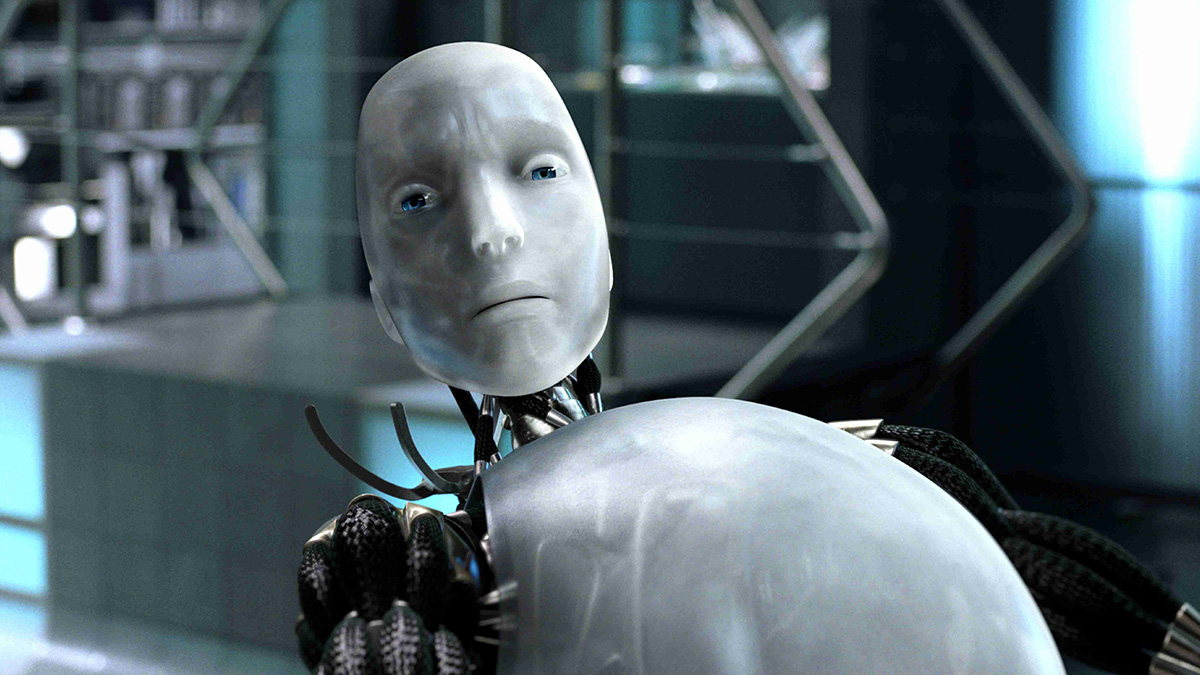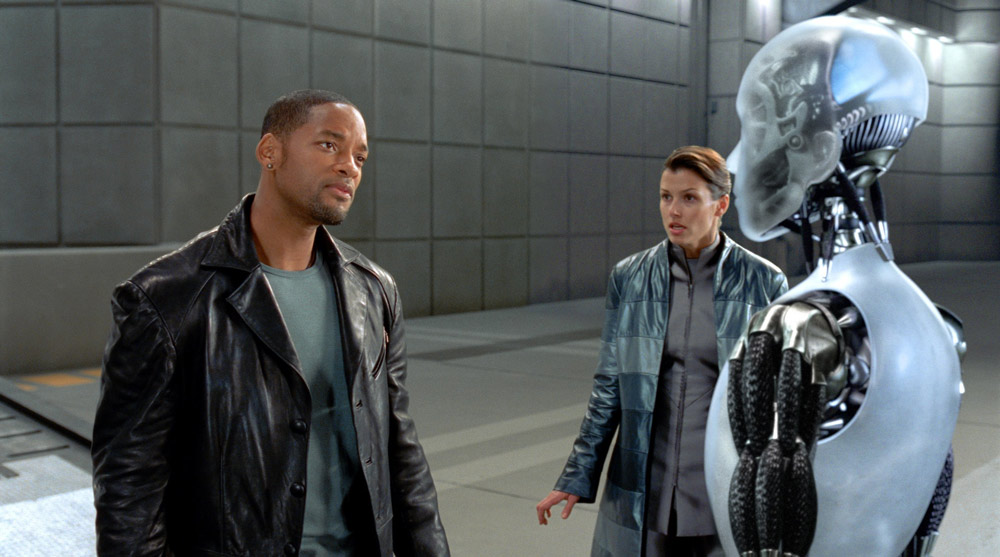
(C)2017 Twentieth Century Fox Home Entertainment LLC. All Rights Reserved.
“I, Robot” tackles the “Three Principles of Robotics” head-on *Note! Contains spoilers.
2019.04.26
AI Viki
At the end of the story, it is revealed that Dr. Lanning's death was to inform the world about the rampage of VIKI (Virtual Interactive Kinetic Intelligence), the AI that controls US Robotics.
This Viki was also originally designed to follow the ``Three Principles of Robotics,'' but as she continued to evolve herself, she noticed some inconsistencies. This is because humans have the potential to destroy themselves through war and environmental pollution. Therefore, by expanding the word ``human'' in Article 1, ``Do not cause harm to humans by overlooking the danger,'' to ``humankind,'' it would be possible to commit individual murders and place humans under the control of AI. I came up with the idea of placing it in He then rewrites the three-principle program of the NS-5 robot and steadily plans a plan to subjugate humanity.

“I, Robot” (C)2017 Twentieth Century Fox Home Entertainment LLC. All Rights Reserved.
When the doctor learned of this, he made a plan to take his own life and make a case out of it, and have his friend Detective Spooner investigate US Robotics. However, the doctor is constantly being watched by Viki, making suicide impossible. So, he secretly created a robot named Sunny with the Three Principles program disabled, and had him kill himself.
In the footage left after his death, Dr. Lanning speaks the words "ghost in the machine" (*6). The theory is that as this happens, AI will evolve on its own.
*6 Originally a philosophergilbert lyleThese were the words used to criticize Descartes' mind-body dualism. It became generally known thatArthur KoestlerThe book “ghost in the machine” (67). The word he coined, "holon", which is talked about in this book, was used in Japan in the 1980s.new scienceIt became like a symbol of the movement, and even the author suffered from it for a while due to his youthful enthusiasm. It's so embarrassing that it comes out).
Furthermore, the Police album “ghost in the machine” (81) and Shirow Masamune's comic “Ghost in the Shell” (89-).
Modification of the three principles
This setting is based on the First Amendment, which states that "machines shall not harm mankind." He must have taken the hint (*7) from ``Do not cause any harm to the people.''
The "machine" that appears here is a positronic brain that overwhelmingly surpasses that of humans. First, human mathematicians create an advanced positronic brain and provide the circuit with a series of steps to get there. By performing the same tasks as humans in a more sophisticated manner, that brain produces a far superior positronic brain. Then, by repeating the same process, this brain produces an even more sophisticated brain. By repeating this process many times, the ``machine'' reached unknown territory that humans cannot understand.

“I, Robot” (C)2017 Twentieth Century Fox Home Entertainment LLC. All Rights Reserved.
Director Alex Proyas and screenwriter Jeff Winter borrowed the idea of the "machine" from inventor and futurist Ray Kurzweil 's book Age of Spiritual Machines. ” inspired the creation of the character Viki.
In fact, Kurzweil describes the ``singularity,'' the turning point at which AI surpasses human intelligence, as ``the birth of an artificial intelligence that continues to improve itself,'' which is similar to Asimov's idea of the ``machine.'' ing. However, Asimov himself takes the stance that robots and machines are good, and does not feature an evil being that rules over humanity like Viki. (*8)
*7 Furthermore, Asimov'srobots and empire” (85), Article 0, ``Robots shall not cause harm to humankind.Also, by overlooking such danger, they shall not cause harm to humankind.'' Conceivable.
*8 On the contrary, many movies have been made that ignore the ``Three Principles'' in which AI and robots control humanity. in particular"2001: A Space Odyssey” (68) and “The Terminator” series (84~), “matrix” series (1999-03) is famous, but there are many other masterpieces as well.
For example, the 3D film "NOVAC", which has not yet been released in Japan, is about a computer called NOVAC in a secret laboratory set up underground in the American desert, plotting a rebellion against humanity.gog” (54). A masterpiece hard science fiction film in which a defense computer called Colossus, developed in the United States during the Cold War, joins forces with the Soviet Union's Guardian to subjugate humanity.Operation Earth Destruction” (70). A sci-fi horror film about a self-replicating computer called Proteus 4, in which the wife of the scientist who developed it gives birth to its own offspring.Demon Seed” (77) are recommended.

